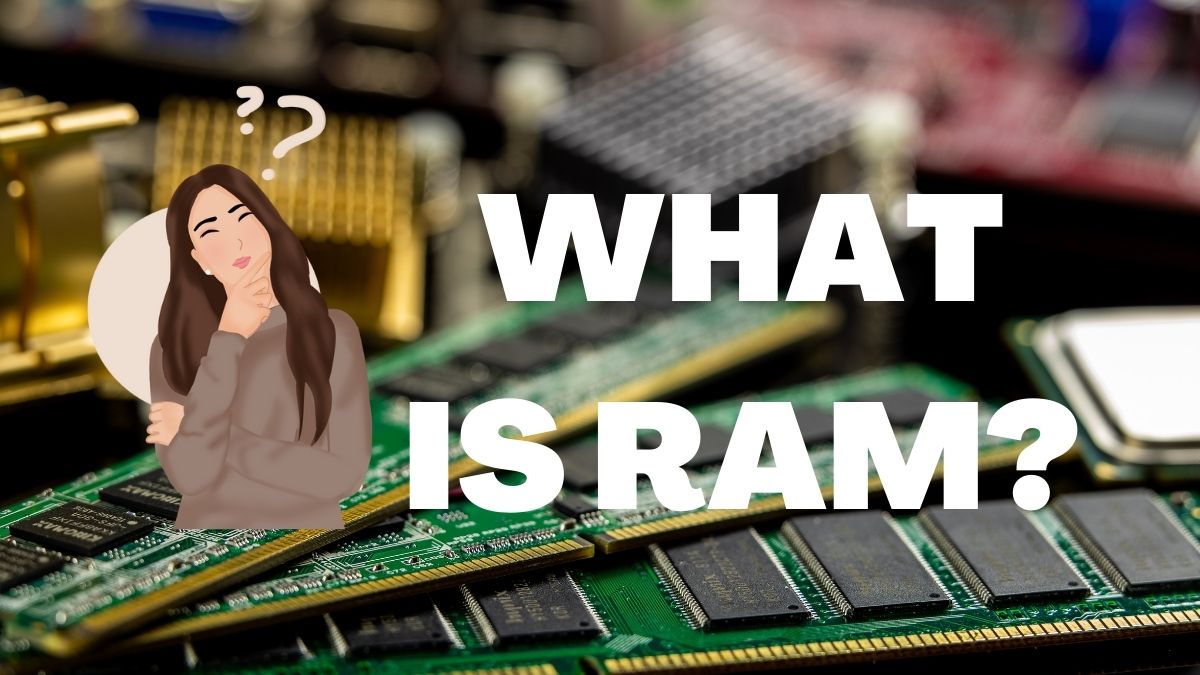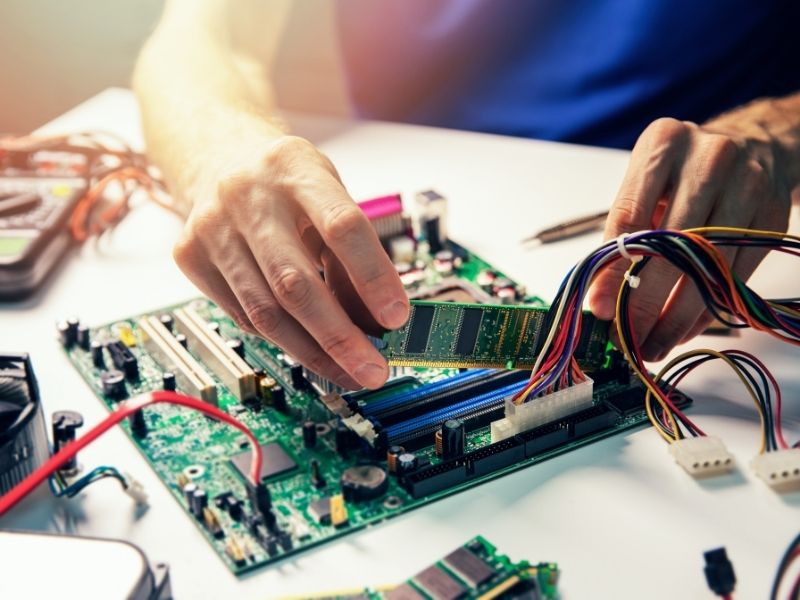
In computing, RAM (random-access memory) is a type of physical memory that stores information and instructions for use by a computer’s processor. The amount of available RAM determines the number of programs or tasks that can run simultaneously.
What is RAM?
RAM is an acronym for Random Access Memory. RAM is the working memory of your computer. This is where the computer stores data and programs that it is currently using. The more RAM you have, the more information your computer can store in its working memory, which means that it can work with more programs at the same time.
What does RAM exactly do?
Whenever we open an application or a program, it gets loaded into the RAM. This is why we often see a spike in RAM usage when we open too many programs. However, it’s quite different from SSD or HDD storage. The data in RAM is only temporary, and it will be erased as soon as we power off the computer.

However, this is not the only task RAM performs. It also stores data that the CPU needs quick access to. A higher amount of RAM will generally result in a snappier and more responsive computer.
It works significantly faster than storage devices like hard drives and solid-state drives. As an example, let’s say that once you are on your computer and load an application, it may take a while. But, once it’s open, the application will load much faster the second time you open it because it’s already stored in your RAM.
Factors to consider when choosing RAM for your system?
You need to consider four main factors when choosing RAM for your system: Capacity, Frequency, Speed, and Latency.
Capacity
Capacity is the amount of data that can be stored on a RAM module. It is measured in megabytes (MB) or gigabytes (GB). The more Capacity a RAM module has, the more data it can store. If you want RAM for your computer, the average capacity ranges from 4GB to 32 and 64. In the case of a laptop, it ranges from 2GB to 16 GB. It is advisable to have at least 8GB of RAM for gaming purposes.
Frequency
Frequency is the speed at which data can be transferred to and from a RAM module. It is measured in megahertz (MHz) or gigahertz (GHz). The higher the frequency, the faster the data can be transferred.
The average frequency for desktops ranges from 2133MHz to 3000MHz. In the case of laptops, it goes from 1600MHz to 2133Mhz.
Speed
Speed is also important because it determines how much time the RAM takes to transfer the data from one point to another. It is measured in nanoseconds (ns). The lower the speed, the faster the data can be transferred.
Latency
Latency is the time it takes to access the data from the RAM module. It is measured in nanoseconds (ns). The lower the latency, the faster the data can be accessed. Checking the latency of RAM is important for gamers and other power users who need the fastest possible data access. The ideal latency for desktops ranges from CL11 to CL16. In the case of laptops, it goes from CL11 to CL21.
How much RAM do I need?
Honestly, it depends on what you’re using your computer for. The majority of users will do just fine with 8GB of RAM. If you’re a power user or a gamer, you may want to consider upgrading to 16GB or more.
Keep in mind that the amount of RAM you have will also affect the number of programs and tabs you can have open at the same time. So, if you often have a lot of programs and tabs open, you may want to consider getting more RAM because it will increase your computer’s overall speed and responsiveness.
Let’s say you are opening roughly 15 to 20 tabs at the same time. In that case, you will need at least 8GB of RAM because the space for these tabs may take from 1GB to 2 GB. If you have a lower amount of RAM, your computer will start to lag and run slowly.
Even if you’re not a power user or a gamer, having more RAM can be helpful if you work with large files or use memory-intensive programs.
In short, more RAM is always better. But, there is a point where you will not see a significant increase in performance by adding more RAM.
What is the Difference Between RAM and ROM?
RAM and ROM are both types of memory used in computers.
RAM is considered ” volatile ” because it only stores data temporarily. This means that the data is lost when the power is turned off.
On the other hand, ROM is considered ” non-volatile ” because it stores data permanently. This means that the data is not lost when the power is turned off.
In general, RAM is faster than ROM because it doesn’t have to wait for the power to be turned on to access the data. However, ROM is slower because it has to wait for the power to be turned on before it can access the data.
ROM is more expensive than RAM because it stores data permanently. This means that the data doesn’t have to be rewritten every time the power is turned on. RAM is less expensive because it only stores data temporarily.
How can you optimize your RAM to get the best performance possible?
There are a few things you can do to optimize your RAM and get the best performance possible:
High-quality RAM module
High-quality RAM will provide better performance and reliability than lower-quality RAM. When buying RAM, look for modules that are rated for higher speeds and lower latencies.
High Frequency
The frequency of a RAM module determines the speed at which data can be transferred. A higher frequency will transfer data faster, resulting in better performance.
Low latency
The RAM latency determines the time it takes for the data to be accessed from the RAM module. A lower latency will allow faster access to data, resulting in better performance.
High speed
The frequency and the latency determine the speed of RAM. A higher speed will allow data to be transferred faster, resulting in better performance.
Use multiple RAM Modules.
Using multiple RAM modules will increase the amount of available memory and improve performance. When using multiple RAM modules, be sure to spread the load evenly across all of the modules to avoid creating a bottleneck.
The Verdict
RAM is an important part of any computer, and the amount of RAM you have will affect the number of programs or tabs you can have open at the same time. More RAM is always better, but there is a point where you will not see a significant increase in performance by adding more RAM. The key is to find the right balance for your needs.






